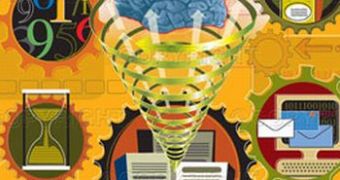Looking at the beautiful androids from SF movies, you should know that they could be built only when a computer could function like a human brain.
In fact, researchers have been improving the computer intelligence for half a century now, but they also largely ignored the most intelligent thing in nature: the human brain.
For over two decades, Jeff Hawkins, the co-founder of Palm Computing and Handspring, has been interested in how brains and computers are alike or how they are not. In 2002, encouraged by a group of neuroscientists, he founded the Redwood Neuroscience Institute.
For three years, he investigated with a team of 10 researchers on all aspects of neocortical anatomy, physiology, and theory and more than 100 other scientists collaborated with them. In 2004, Hawkins came up with a theory named Hierarchical Temporal Memory, but which was still based on biology. The biggest challenge was to surpass the biological theory and develop a practical technology.
Then, one researcher, Dileep George, revealed him how HTM could be transformed on a type of Bayesian network. George's prototype application represented a vision system that could recognize line drawings of 50 different objects, unaffected by size, position, distortion, and noise. The system was not carrying on a practical problem, but it did what no other previous vision system was ever able to do.
In 2005, armed with a theory of the neocortex, its mathematical expression and George's prototype, Hawkins made a first step, Numenta, in Menlo Park, California. Numenta has made a software platform that allows anyone to experiment HTMs deployment. A HTM cannot be programmed like a computer; it is configured with software tools, then trained by exposing it to sensory data.
These systems thus learn the way children do.
Now HTMs have reached sufficient complexity to work, at least on some difficult and useful problems, like handling distortion and variances in visual images.
The software development toolset developed by Numenta will further evolve. Industry, academia, and government already focus on how to employ HTMs for solving problems in data-rich fields like oil exploration and drug discovery. HTMs could also be employed for classic issues like speech, visual pattern recognition, meteorology, and financial analysis.

 14 DAY TRIAL //
14 DAY TRIAL //